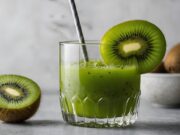Here are 20 interesting facts about Milo
- Milo is a chocolate-flavoured malted powder product produced by Nestlé. It is typically mixed with milk, hot water, or both, to produce a beverage. It was originally developed in Australia by Thomas Mayne (1901–1995) in 1934.
- Milo was developed to help children get enough nutrients in their diet. Milo is made from malted barley and cocoa, and also contains milk solids and sugar. It has added minerals, vitamins and iron to provide essential nutrients for growing kids. It was intended as a response to the fact that children were not receiving enough nutrients from their daily diet during the Great Depression.
- Milo is named after the ancient Greek athlete Milo of Croton. Milo of Croton was known for his legendary strength and feats of wrestling. He was a six-time Olympic champion and a seven-time Pythian Games champion. The name was chosen to reflect the energy and vitality that Milo provides.
- Milo has different versions and tastes in different countries. Milo is sold in over 40 countries worldwide, but its composition and taste vary depending on local preferences and ingredients. For example, Malaysian Milo has more malt and is sweeter than Australian Milo, while Colombian Milo has added cereal and grains.
- Milo is not just a drink, but also a snack bar, breakfast cereal and protein granola. Nestlé has developed various derivative products from Milo, such as snack bars, breakfast cereals, protein granolas, ready-to-drink beverages and ice creams. These products aim to offer more convenience and variety for consumers who love the taste of Milo.
- Milo is most commonly sold as a powder in a green can. The green can has become an iconic symbol of Milo, often depicting various sporting activities. The original cans showed a depiction of a cow that the Olympic athlete Milo carried on his shoulders to help build his strength. The green colour was chosen to represent health and vitality.
- Milo can become addictive if eaten in large quantities. Milo contains theobromine, a chemical similar to caffeine, that is found in cocoa. Theobromine can have stimulating effects on the nervous system and can cause addiction if consumed excessively. Some people may eat up to 15 teaspoons or more of Milo per day, which can lead to dependency and withdrawal symptoms.
- Milo is often consumed with other ingredients to enhance its flavour or texture. Some people like to add sugar, honey, condensed milk, cream or ice cream to their Milo drink to make it sweeter or creamier. Others like to sprinkle Milo on top of their milk or yogurt to create a crunchy layer. Some people also like to eat Milo straight from the spoon or mix it with peanut butter or Nutella.
- Milo is popular among athletes and sports enthusiasts. Milo is marketed as a source of energy and nutrition for active people, especially children who play sports. Milo sponsors various sporting events and programs around the world, such as the MILO Marathon in the Philippines, the MILO Cup in China and the MILO Champions Band in Australia.
- Milo has a loyal fan base and a strong online presence. Milo has millions of fans who share their love for the product on social media platforms such as Facebook, Instagram and Twitter. Milo also has its own website and YouTube channel, where it posts recipes, tips, stories and videos related to Milo.
- Milo was launched at the Sydney Royal Easter Show in 1934. The Sydney Royal Easter Show is an annual agricultural exhibition and carnival that attracts millions of visitors every year. Milo made its debut at the show in 1934, where it was offered as a free sample to the public. It was an instant hit and soon became a household name in Australia.
- Milo is still made in the same factory where it was first produced in 1934. The Smithtown factory in New South Wales is where Thomas Mayne created his formula for Milo and started producing it for Nestlé. The factory still operates today, employing 170 people and producing over 2 million cans of Milo every year.
- Milo’s recipe has remained unchanged in Australia since its creation. Aussie Milo still tastes the same as it always has, as the recipe has not been altered since Thomas Mayne invented it in 1934. However, some minor changes have been made over the years to improve its quality and safety standards, such as reducing its fat content and adding vitamin D.
- Milo’s creator Thomas Mayne enjoyed a hot Milo every night before bed. Thomas Mayne was passionate about his product and believed in its benefits for health and well-being. He practised what he preached by drinking a hot cup of Milo every night before going to sleep until he died at age 93.
- Milo’s creator Thomas Mayne’s wife was the original guinea pig for the Milo recipe. Thomas Mayne spent years experimenting with different ingredients and proportions to perfect his formula for Milo. He brought his samples home for his wife to taste and give feedback until he was satisfied with the final product.
- Milo’s creator Thomas Mayne gave up trying to make Milo dissolve more into milk after hearing that his children loved eating the crunchy top layer. Thomas Mayne spent hours trying to make Milo more soluble in milk or water, but he faced difficulties due to the high fat content of cocoa butter. He eventually stopped trying when he learned that his children enjoyed eating the crunchy layer of undissolved Milo on top of their milk.
- Milo’s crunchiness is due to its unique manufacturing process. To make Milo powder, malted barley is roasted and ground into fine particles, then mixed with cocoa powder, milk powder, sugar and other ingredients. The mixture is then sprayed with hot steam under high pressure to form small granules that are dried and packed into cans.
- Milo contains maltose , which gives it a distinctive malty flavour . Maltose is a type of sugar that is formed when starch is broken down by enzymes . Maltose is found naturally in malted barley , which is one of the main ingredients of MILO . Maltose gives MILO a sweet , malty flavour that sets it apart from other chocolate drinks .
- MILO contains antioxidants , which help protect cells from damage . Antioxidants are substances that can prevent or slow down oxidative stress , which is caused by free radicals . Free radicals are unstable molecules that can damage cells , DNA , proteins and lipids . Antioxidants can neutralize free radicals by donating electrons . MILO contains antioxidants from cocoa , such as flavonoids , polyphenols and catechins .
- MILO supports various social causes , such as education , health , environment and community development . MILO aims to make a positive impact on society by supporting various initiatives that align with its values . For example , MILO runs school feeding programs , sports clinics , scholarships , recycling campaigns , tree planting activities , disaster relief efforts and more .
Facebook Comments

































